Qlik QSDA2021 - Qlik Sense Data Architect Certification Exam - February 2021 Release
Refer to the exhibit.
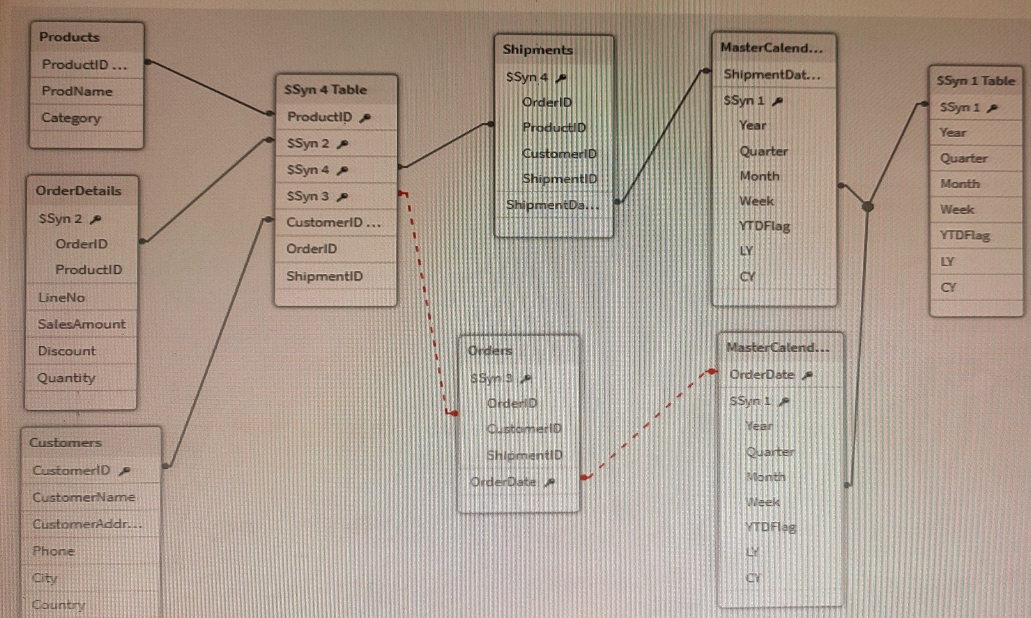
A data architect is working on a Qlik Sense app the business has created to analyze the company orders and shipments. To understand the table structure, the business has given the following summary:
• Every order creates a unique orderlD and an order date in the Orders table
• An order can contain one or more order lines one for each product ID in the order details table
• Products in the order are shipped (shipment date) as soon as tliey are ready and can be shipped separately
• The dates need to be analyzed separately by Year Month, and Quarter
The data architect realizes the data model has issues that must be fixed.
Which steps should the data architect perform?
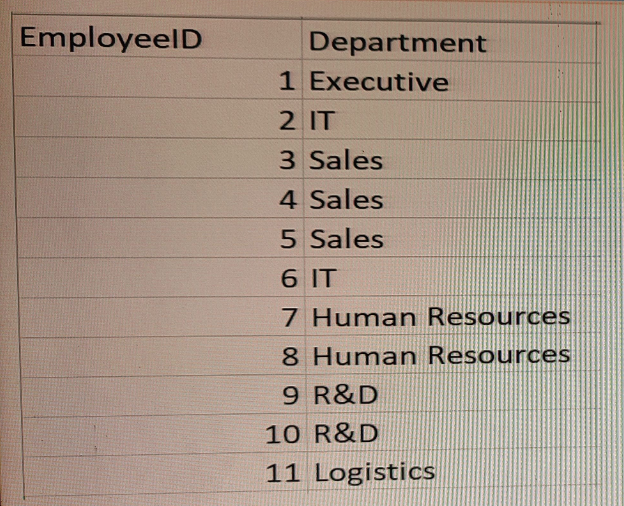
A company has different departments. Executive and Sales should always be the first values in aDepartment filter pane. Which script must the data architect use to meet this requirement?
A)

B)
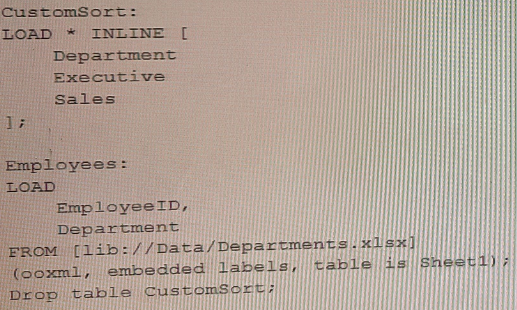
C)
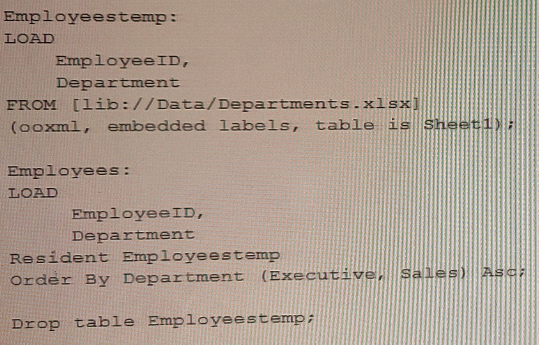
D)

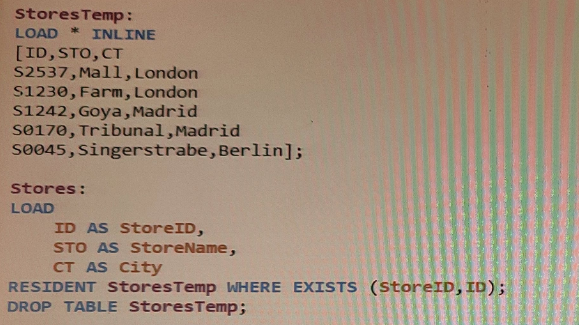
Refer to the exhibit
A data architect develops an app for Coffee4all, a coffee company with stores located throughout Europe
The script runs successfully, but the Stores table does not have any values.
What should the data architect do?
Refer to the exhibit.

A data architect needs to add a Budget table to the current Qlik Sense app. A Budget table with the fields Budget, CustomerlD, and ProductlD is loaded into the model. What will be created?
The Marketing department is using some similar KPIs in different apps that need to be modified frequently according to the business needs. The KPIs are created using master items with the same expression.
Which method should the data architect use to manage the modifications in all apps?



